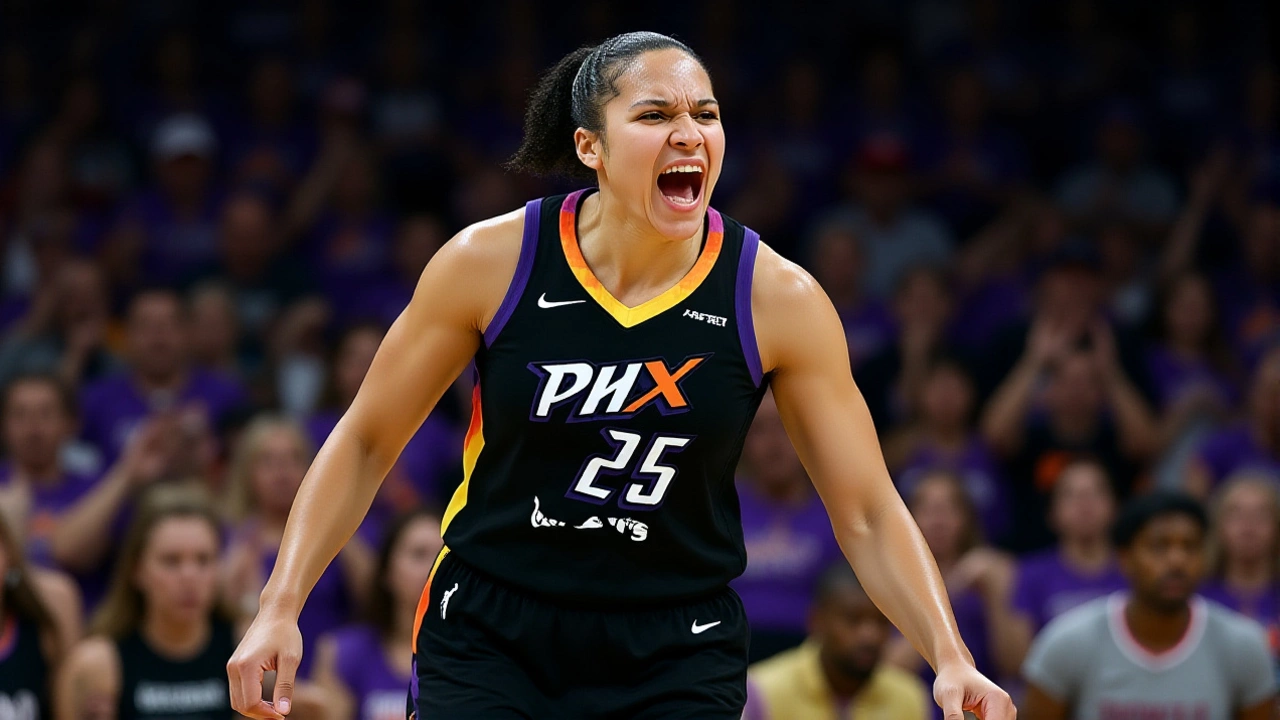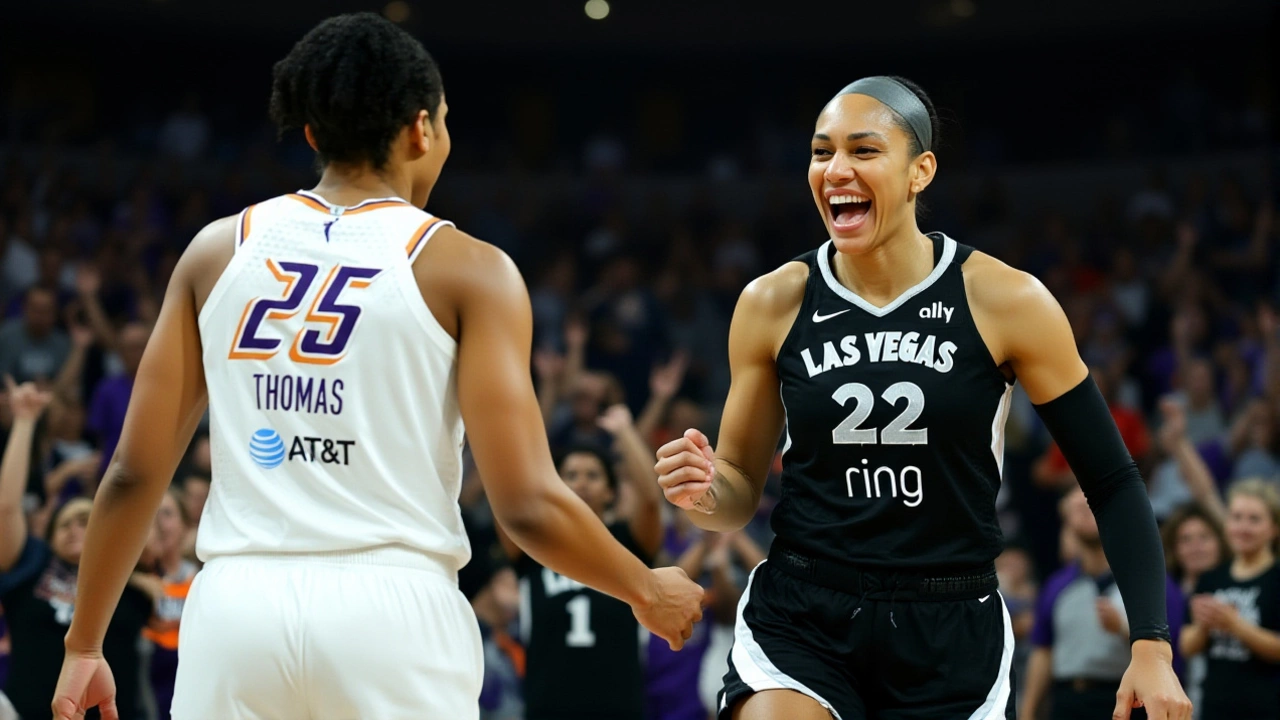When Dana Evans, a bench spark plug for the Las Vegas Aces, poured in 21 points, the 2025 WNBA Finals Game 1Las Vegas turned into a nail‑biter.
The matchup, staged on Friday, October 3, 2025, at 8 p.m. ET, marked the league’s first ever best‑of‑seven championship series, and the Aces' 89‑86 win gave them a 1‑0 edge over the Phoenix Mercury. Fans in the bustling Las Vegas arena felt the tension rise with every basket, and the broadcast on ESPN drew a record‑high viewership for a WNBA opener.
Historic Shift to a Best‑of‑Seven Format
Until this season, the WNBA capped its championship showdown at five games. The new 2‑2‑1‑1‑1 layout aligns the league with the NBA and NFL, promising more drama and, frankly, more ticket revenue. The decision, announced at the WNBA’s annual board meeting in March 2025, was championed by WNBA Commissioner Cathy Engelbert, who argued the longer series would "give fans more moments to fall in love with the sport".
Critics worried the extended grind could strain smaller market teams, but early ticket sales suggest the gamble is paying off. The Aces, already scheduled to host Games 1, 2, 5, and 7, stand to benefit from home‑court revenue boosts that could total upwards of $3 million if the series goes the distance.
Game 1 Recap: Aces Edge Mercury in a Nail‑Biter
From the opening tip, the contest felt like a playoff thriller. The Mercury, led by Kahleah Copper, erupted early, sinking five three‑pointers in the first half and flashing a 44‑38 lead at halftime.
But the Aces answered in kind. Jewell Loyd poured in 18 points off the bench, while veteran A'ja Wilson dominated the paint with 12 rebounds and two blocks in the fourth quarter.
The climax came with 1:12 left on the clock. Evans drove the lane, drew a foul, and sank two free throws to put Las Vegas up 88‑86. Copper answered with a contested three, but the Aces held on after a clutch defensive stop, sealing the win.
Key Performers and Bench Firepower
Beyond the headline‑makers, the bench proved decisive. Evans, who averaged 8.3 points per game off the bench all season, turned that into 21 points in just 22 minutes – a scoring burst the Mercury couldn’t match.
For Phoenix, despite Copper’s 21 points, the supporting cast combined for only 34 points, a shortfall that the Mercury’s coach Cindy Brown described as “a rookie night in a finals setting.”
Statistically, the Aces out-rebounded the Mercury 46‑38 and forced 14 turnovers to 9, a margin that will likely influence the tactical approach in Game 2.
Coaches’ Strategies and Tactical Moves
Head coach Becky Hammon praised her team’s resilience, noting, "We trusted our role players the whole night. When they deliver, the pressure lifts off the starters." Hammon’s rotation shuffled five players in the fourth quarter, a move that paid off in fresh legs and defensive intensity.
On the other sideline, Brown admitted she will need to adjust her offensive sets, especially the reliance on Copper’s perimeter shooting. "We have to find another way to generate points inside the paint," she said, hinting at a possible increased role for DeWanna Bonner in the upcoming games.
What the Series Means for the WNBA’s Future
The new format is already sparking conversation about the league’s growth trajectory. Analysts at ESPN’s "SportsCenter" projected a 12% bump in average viewership across a full seven‑game series versus the previous five‑game maximum.
Financially, a seven‑game finals could push the league’s postseason revenue past $25 million for the first time, a figure that may influence future collective bargaining and salary cap discussions.
Fans, too, are feeling the excitement. Social‑media chatter on Twitter peaked at #WNBAFinals with over 2.3 million mentions in the 24 hours after Game 1, a record for the league’s championship stage.
Looking Ahead: Schedule, Stakes, and Possible Outcomes
Game 2 rolls out on Sunday, October 5 at 3 p.m. ET on ABC, same venue. If the Aces clinch a second win, they’ll seize a commanding 2‑0 lead before heading to Phoenix for Games 3 and 4.
The Mercury must bounce back quickly. With a home crowd in the desert, they’ll rely on Copper’s shooting and a reinvigorated inside game featuring Satou Sabally.
Should the series stretch to a seventh game, the league’s first ever, the spotlight will be huge – both for the players who could cement legacies and for the WNBA’s brand, which hopes the extended drama will translate into lasting fan growth.

Frequently Asked Questions
How does the new best‑of‑seven format affect the teams?
The longer series gives teams more room to adjust strategies between games and reduces the chance of a single upset deciding the championship. It also means deeper benches become more valuable, as fatigue can set in during a potential seven‑game stretch.
What impact does this series have on the WNBA’s growth?
Early ratings suggest a 12% increase over a five‑game maximum, and ticket sales for the Las Vegas games have topped $1.2 million. Those numbers hint at higher advertising revenue and a stronger bargaining position for players in future CBA talks.
Who are the key players to watch in the series?
Beyond the usual stars – A'ja Wilson for the Aces and Kahleah Copper for the Mercury – the bench spark plugs are critical. Dana Evans and Jewell Loyd could swing momentum in Vegas, while DeWanna Bonner and Satou Sabally may provide the inside presence Phoenix needs.
When is the next game and where will it be played?
Game 2 is set for Sunday, October 5 at 3 p.m. ET on ABC, again at the Las Vegas venue. If the series reaches Games 3 and 4, those will shift to Phoenix, with Game 3 slated for Wednesday, October 8 at 8 p.m. ET.
What are the chances each team has to win the championship?
Betting markets opened with the Aces as slight favorites at -150, reflecting their recent back‑to‑back titles and home‑court advantage. The Mercury, however, are priced at +130, indicating that a few key adjustments could flip the odds in their favor.
